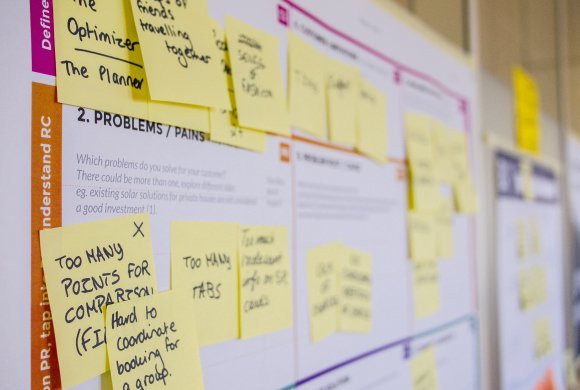These days, few would argue the importance of employee engagement on a company’s bottom line. Where once “engagement” was a concept that didn’t even appear on an employer’s radar, then became arguably one of the most used buzzwords in business, it is now integral to any operation. Why? Because we now know that employee engagement has a significant, tangible impact on a company’s success.
Engaging the Evidence on Wellness
The impact of employee health and wellness on business is now where engagement was 10 years ago. There is also significant evidence on the ROI of lowering stress and a creating a healthier workforce, but it’s taking businesses a while to catch up. We know that employee wellness will have big pay-offs, but assumptions around cost and value leave many business owners straggling to get on board.
While some things have changed it’s hard to believe that not so long ago smoking was permitted in offices, restaurants and even airplanes and there is still a healthy margin for improvement. According to a Maclean’s article in October, 2007, “Stress is part of an explosion in workplace mental health issues now costing the Canadian economy an estimated $33 billion a year in lost productivity, as well as billions more in medical costs.”
The Canadian Centre for Occupational Health and Safety states “Workplace health and wellness programs should be a part of the overall company strategy for a healthy workplace.” While statistics show that the trend toward providing wellness initiatives is growing, many businesses are slow to make this a regular and important part of employee engagement.
Why So Bullish About Health?
A 2015 research survey report by Deloitte titled, Employers Still Bullish on Wellness Programs, states that while employers generally believe that wellness programs are an important recruitment and retention tool, they also view some components of these programs as negative, invasive, or another chore they have to fulfill.
Then there is the issue of mandatory versus voluntary. If you make programs mandatory, you may find some employees feeling resentful or put-upon especially if they are already involved in their own health and wellness activities. As soon as you make something mandatory, it no longer feels like a perk or benefit. However, if you make it optional, the potential exists that those who need it most will choose not to participate.
Another reason employers may drag their heels is that measuring the ROI of a wellness program can be difficult. While theoretically, a business may believe that health and wellness is good for employees (and by inference, business), practically, they may not be convinced it will be good for their business. According to the Deloitte research,
“Seeing effects from programs is not immediate and might take time. Few employers likely have the scale, resources, and infrastructure to produce a credible ROI that is specific to their program and population.”
Finally, there is an underlying fear that even with the benefits of implementing health and wellness programs, the costs will be prohibitive. However, with so much information on health and wellness readily available, a simple Google search can provide dozens of low-cost ways to get started. Finding something that engages, but does not break the bank, is possible. (Click to download a pdf of 101 low cost ideas)
Engagement is the Global Key
Interestingly, wellness initiatives are most successful in organizations with high levels of employee engagement. That said, some organizations have also used wellness initiatives to increase engagement.
One example of this is the Global Corporate Challenge (GCC) founded in Australia. GCC is a global movement focused on getting people moving. Since its inception in 2003, it has reached nearly 2 million employee participants annually, involving 4,700 organizations across 185 countries. It truly is a global movement.
The GCC program (www.gettheworldmoving.com) is based on turning activities (walk, swim, cycle) into “steps” which are documented and accumulated throughout the term of the program. Employees participate in teams and team progress is monitored and calculated online. Participants literally “walk” around the world as the GCC maps out how far teams travel based on their collective number of steps. Teams can walk virtually from Paris, France to Rio di Janeiro, Brazil.
Highly “gamified”, the program provides interactivity, forums, badges, awards and incentives for both individuals and teams to maintain and increase their steps. Participating companies have seen people improve their health; walk instead of drive, park farther away, go on group walks, use the stairs, and eat better. In addition, the program creates friendly competition. People experience a daily “buzz” as they compare their team’s results with other teams, and find ways to inspire their teams to greater health. The process generates fun and energy in the workplace. Not only do companies who participate have healthier employees when the challenge is finished, they enjoy a closer-knit team that works together more effectively and efficiently. The result is greater engagement and collaboration, and higher productivity.
Finding the Healthy Fit
This is just one example of how engagement and employee wellness are closely linked and affordable. The important thing for any company considering a wellness initiative is that is fits their team, their culture, and their budget.
Here are a few ideas:
- A company located outside a city core lacking nearby food/restaurant options could provide healthy snacks for their employees
- A downtown company might choose to implement lunch-hour walks, or dedicate a space in the office for stretching or yoga
- A company with a large Millennial workforce may choose to implement an online program that contains elements of gaming
- Another might provide staff with step counters and create an internal competition.
Consider the following 6 tips before embarking on a health and wellness plan:
- Find out what employees want (as opposed to what you think they want)
- Consider creating a wellness committee to provide suggestions
- Use activities that encourage connection; individual activities are great, but if you want your wellness efforts to really have an impact, they need to connect your team
- Start small: try it out, get feedback, and adjust accordingly
- Choose something that does not exceed your capacity to administer and maintain
- Find ways to measure the effectiveness of your efforts. For example – are people more alert and energetic late in the afternoon on days when they’ve gone for a lunch hour walk? This can help you determine what’s working and what isn’t.
Dr. Cynthia Akrill, a physician trained in neuroscience, wellbeing and leadership, coaching, and expert GCC Consultant captures it precisely when she says,
“Cultures that promote wellbeing, safety and human connection drive engagement and ultimately become more competitive. Employers can create a culture that connects it to better business outcomes.”
The research shows that individuals with healthier lifestyles tend to cost companies less and are more productive at work. A healthier, less stressed, more productive workforce AND higher levels of engagement, emotional commitment and behaviours that lead to improved business outcomes? The ROI on employee wellness is pretty clear.




